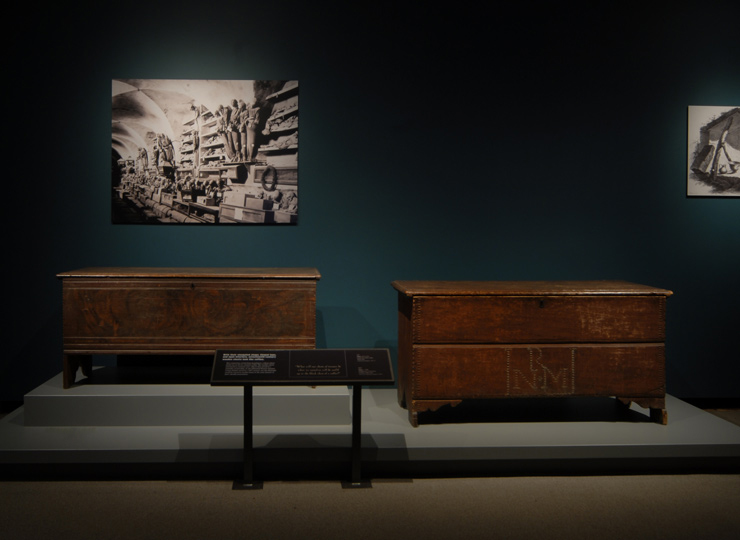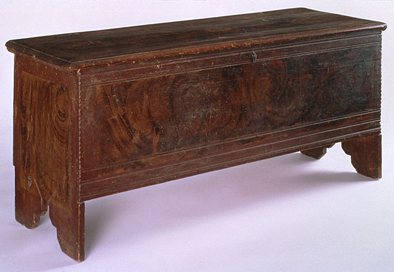With their elongated shape, hinged tops and open interiors, seventeenth-century wooden chests look like coffins.
This connection carried deep meaning in a culture where death was an all too common reality. The wooden chests functioned as memento mori, objects that served as a reminder of mortality. As the influential Boston minister Cotton Mather noted in a 1697 sermon, one day all people would be stored in wooden boxes in the same manner as their valuable possessions:
“What will our chests of treasure be when we ourselves will be nail’d up in the black chest of a coffin?”
Chest, 1675-1720
Connecticut River Valley
White pine
Chipstone Foundation 1997.15
Chest, c. 1690
Middletown, Connecticut
Southern yellow pine
Layton Art Collection, Purchase L1987.1

